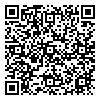 |
 本站僅提供期刊文獻檢索。 本站僅提供期刊文獻檢索。
【月旦知識庫】是否收錄該篇全文,敬請【登入】查詢為準。
 最新【購點活動】 最新【購點活動】
|
| 篇名 |
阻力運動強度與組間休息期對於能量消耗之影響
|
| 並列篇名 |
The effect of intensity and resting interval length on metabolic responses to the resistance exercise |
| 作者 |
吳柏翰 (Bo-Han Wu)、徐錦興 (Chin-Hsing Hsu)、蔡懷安 (Huai-An Tsai)、蔡定剛 (Ting-Kang Tasi)、陳彥齊 (Yei-Chi Chen) |
| 中文摘要 |
無論是否為運動選緒論:阻力運動 (resistance exercise, RE) 可以提升運動後之過攝氧量(excess post-exercise oxygen consumption, EPOC),而EPOC的大小受到強度、組間休息(rest interval, RI)與訓練負荷量之影響。先前的研究分別證實高強度與短RI可以顯著提升運動中之能量消耗與EPOC。但強度與RI對於阻力運動能量代謝反應之交互作用影響仍不清楚。研究目的:在探討阻力運動強度高低與組間休息期長短對於等訓練負荷量之阻力運動中與運動後能量代謝反應之影響。方法:本研究以8名有規律阻力訓練的男性大專生為受試對象,所有受試者在進行RE前皆進行最大肌力測驗 (1 repetition maximum, 1RM),隨後以重複量數與平衡次序設計分別進行高強度長RI (5組、75%1RM進行10次反覆、組間休息時間為2分鐘, HL)、高強度短RI (5組、75%1RM進行10次反覆、組間休息時間為1分鐘, HS)、低強度長RI (5組、50%1RM進行15次反覆、組間休息時間為2分鐘, LL) 與低強度短RI (5組、50%1RM進行15次反覆、組間休息時間為1分鐘, LS) 之阻力運動 [動作包含直立划船與半蹲舉;本研究之阻力運動是在史密斯訓練架 (smith machine) 上進行] 等4次實驗處理。在安靜休息 (Rest)、運動中 (Exe1, Exe2) 與運動後120分鐘 (R30, R60, R90, R120) 全程分析受試者之攝氧量 (oxygen consumption, VO2)、心跳率 (heart rate, HR)、換氣量 (ventilation volume, VE) 與呼吸交換率 (respiratory exchange ratio, RER)。本研究以相依樣本2因子變異數分析 (ANOVA) 分析參與者之能量消耗 (energy expenditure, EE)、運動後過攝氧量與RER是否有顯著差異,顯著水準α訂為 .05。結果:HS在運動中與恢復期之VO2, EE與EPOC 皆顯著高於HL, LS與LL,此外,HL與LS亦顯著高於LL (p< .05),但HL與LS間卻無顯著差異存在 (p> .05)。各處理在運動後60-120分鐘 (R60, R90, R120) 之RER皆顯著低於安靜休息值 (Rest) (p< .05) 且各處理之EPOC皆持續至120分鐘。在生理指標方面,HR在Eex2 (HS>LS, LL)、R30 (HL>LL) 與R60 (HS>LS) 達顯著差異。此外,VE在Eex1、Eex2 (HS>HL, LS, LL; HL>LL; LS>LL) 與R30 (HS>HL, LS, LL; LS>LL) 達顯著差異(p< .05)。結論:本研究發現阻力運動強度越高,組間休息期越短,運動中的能量消耗與運動後過攝氧量越多。但進行低強度短組間休息期的阻力運動一樣能達到高強度長組間休息期在能量消耗上的效益。手,阻力訓練對於受訓人員的健康和成績都有許多好處。本研究主要的目的是探討12 週阻立訓練計畫對於成年健康年輕男性的血液生化指標參數的影響。方法:受試對象為19-27 歲的健康成年男性,每週實施三次持續一小時的重量訓練,於第1、6 及12 週每次訓練前兩小時及訓練後一小時各抽血一次檢查。分析項目包含血液學檢查、血球計數、血清學化學檢查、肝功能 / 肌肉傷害,血中代謝產物和電解質。結果:血液學檢查在阻力訓練前後並沒有顯著差異。每次訓練後,白血球總數 (6.23± 1.49×103 / uL 與7.24 ± 1.85×103 / uL)和嗜中性白血球 (55.41 ± 7.72% 與63.85 ± 10.03%)計數顯著增加 (p < .05),相反的,淋巴細胞及嗜酸性白血球數量則減少 (p < .05)。紅血球沈降係數和嗜中型白血球 / 淋巴球比兩種指標上升,顯示每次阻力訓練後的暫時急性發炎反應。雖然,並沒有證據顯示運動引發肌肉的傷害,但是每次訓練運動後常發生電解質明顯改變。上述檢驗數據的變化,僅發生在阻力訓練計畫的第ㄧ和第二個月。結論:本研究結果表明,參與受試者接受阻力訓練兩個月之後,對於運動壓力的衝擊,會產生生理適應。這項研究結果,值得未來對於訓練強度和效果的關係進行研究,挑戰極限並找出最適合的訓練方案。 |
| 英文摘要 |
Introduction: Resistance exercise (RE) can significantly increase the magnitude of excess post-exercise oxygen consumption (EPOC), and which was affected by intensity, rest interval (RI) and training volume. Previous studies have demonstrated that high intensity and short RI could significantly increase the energy expenditure (EE) and EPOC following RE, but the interaction between intensity and RI on metabolic responses to RE is not clear yet. Purpose: To investigate the effects of equal work resistance exercise with different intensity and rest interval (RI) on metabolic response during and after RE. Methods: Eight university males who regularly performed RE participated in this study. After completing one repetition maximum (1RM) test, subjects performed 4 treatments in a counterbalanced order: high intensity and long rest (HL: 75%1RM, 10rep; RI: 2min); high intensity and short rest (HS: 75%1RM, 10rep; RI: 1min); low intensity and long rest. (LL: 50%1RM, 15rep; RI: 2min) and low intensity and short rest (LS: 50%1RM, 15rep; RI: 1min) RE (upright row and half squat which were performed on smith machine). The oxygen consumption (VO2), respiratory exchange ratio (RER), ventilation volume, (VE) and heart rate (HR) were measured during (Exe1 and Exe2) and after RE (R30, R60, R60 and R120). Statistical analysis of two-way analyze of variance with repeated measures was applied to analyze the differences of EE, EPOC and RER. Statistical significance was set at α = .05. Results: VO2, EE, and EPOC during and after RE were significantly higher in HS than in HL, LS, and LL. In addition, HL and LS were significantly higher than LL (p < .05), but no difference was observed between HL and LS (p > .05). The RER at R60, R90 and R120 were significantly lower than Rest (p < .05). Moreover, the EPOC of HS, HL, LS and LL lasted for 120 min after RE. At other physiological index, there were significant differences in HR at Eex2 (HS > LS, LL), R30 (HL > LL) and R60 (HS > LS) among treatments. In addition, there were significant differences in VE at Eex1, Exe2 (HS>HL, LS, LL; HL > LL; LS > LL) and R30 (HS > HL, LS, LL; LS>LL) among treatments (p < .05). Conclusion: The results indicated that equal work RE with higher intensity or shorter RI produce higher EE and EPOC. However, the EE and EPOC levels of LS were no differences with HL. |
| 起訖頁 |
137-150 |
| 關鍵詞 |
運動後過攝氧量、呼吸交換率、能量消耗、excess post-exercise oxygen consumption、respiratory exchange ratio、energy expenditure |
| 刊名 |
體育學報 |
| 期數 |
201706 (50:2期) |
| 出版單位 |
中華民國體育學會
|
| DOI |
10.3966/102472972017065002002
複製DOI
|
| QRCode |
 |
| 該期刊-上一篇 |
四肢發達頭腦卻不簡單-運動員與認知神經功能之研究回顧與展望 |
| 該期刊-下一篇 |
12週阻力訓練對健康年輕成年男性血液生化指標的影響 |
| |
|
新書閱讀
最新影音
優惠活動
|